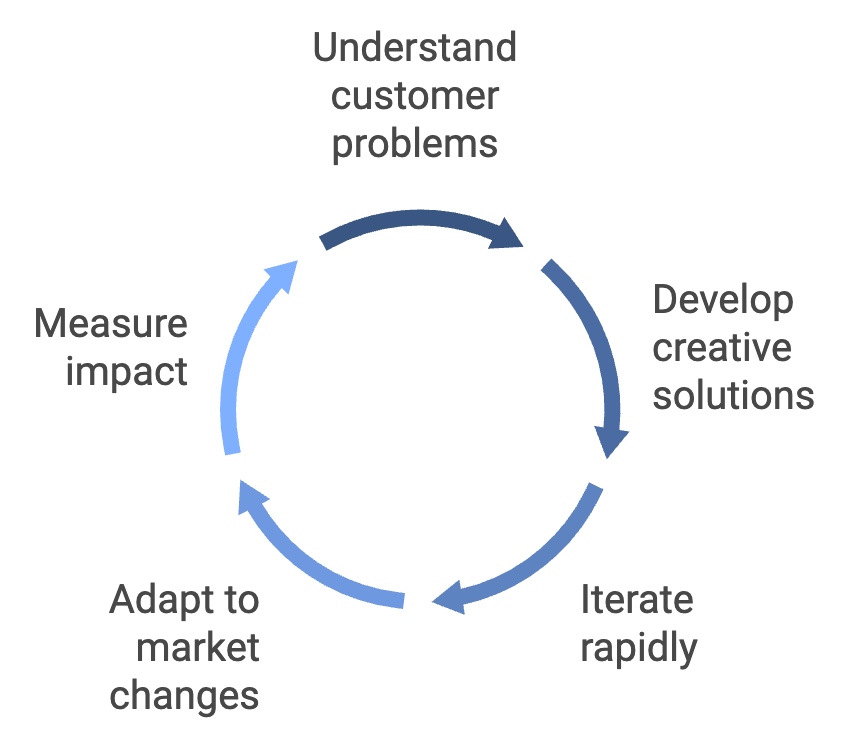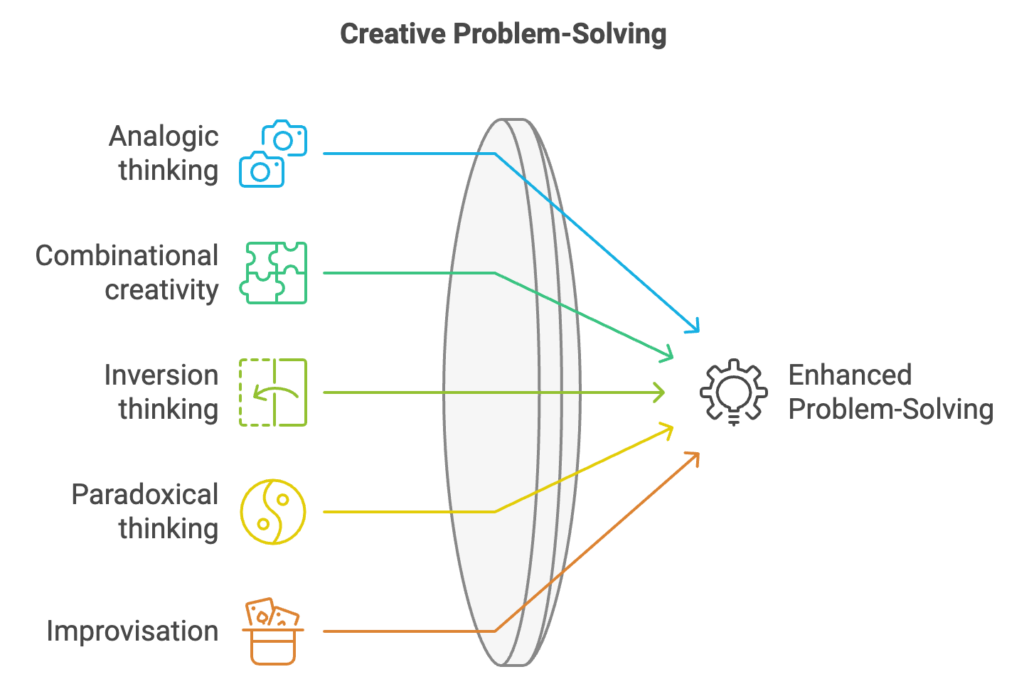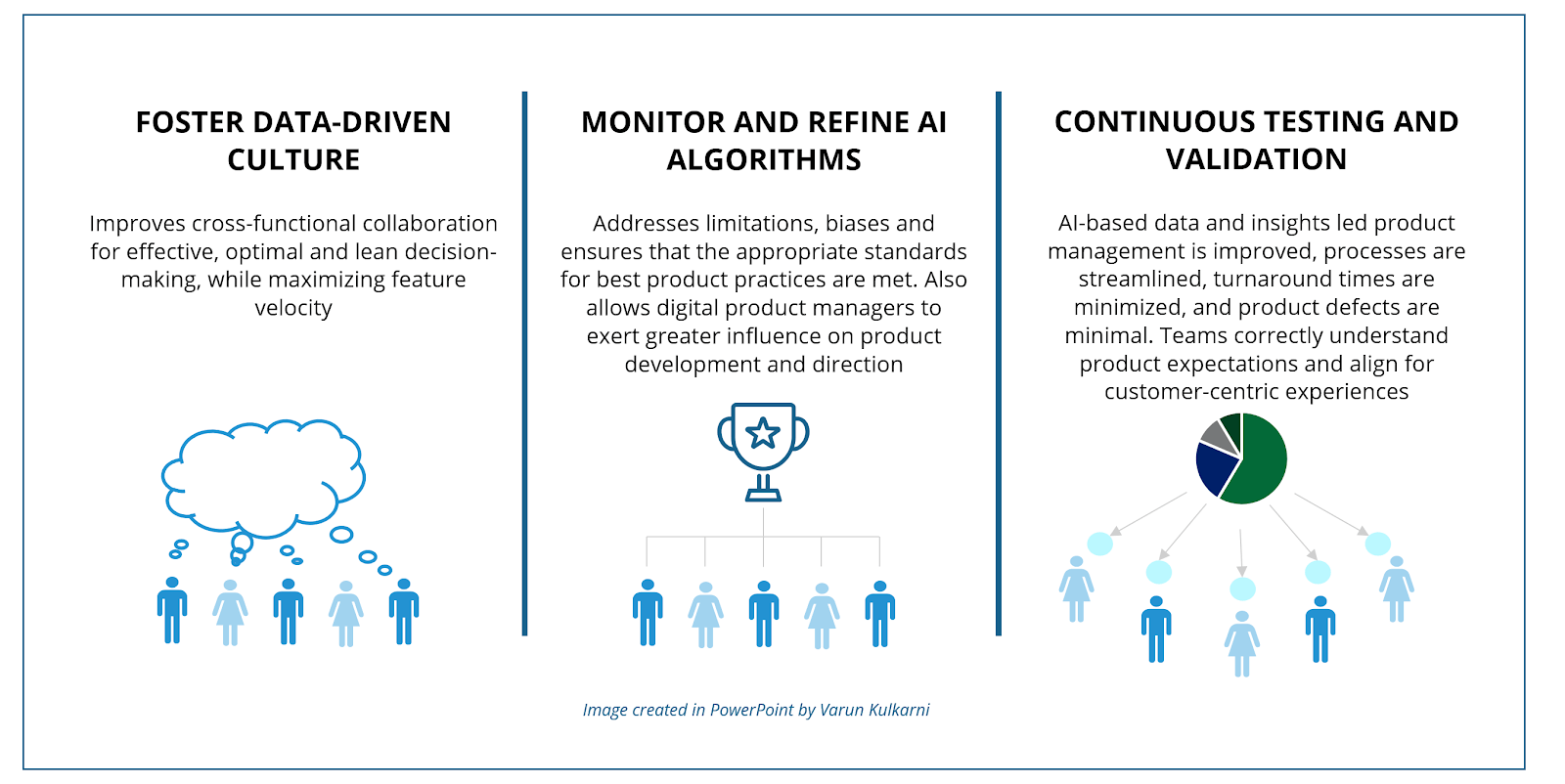The Product Operating Model offers a comprehensive and effective framework for developing outstanding products. Within this model, the Problem-Solving dimension underscores the significance of gaining a profound understanding of user needs and recognizing substantial problems that must be addressed. However, organizations must ensure that a culture of creativity exists to empower the product team to produce a pipeline of ideas to solve customer and business problems quickly and effectively.
---------
Creative Problem-Solving in the Product Operating Model
In his books and blog posts, Marty Cagan, author, and founder of the Silicon Valley Product Group, advocates for organizations to embrace the Product Operating Model and for product teams to move away from feature-focused roadmaps and embrace a problem-centric approach. This mindset encourages teams to define success in terms of solving customer problems rather than delivering a predefined set of features or functionality. The true measure of success lies not solely in the output (what was built), but rather in the outcome (how it improved the customer experience or addressed a pain point).
At the heart of this approach is recognizing that true innovation stems from a deep understanding of customer problems. Product managers are tasked with developing creative solutions that address these issues meaningfully. This requires a level of creative thinking that goes beyond simply implementing requested features or following predetermined roadmaps. In agile environments, a product team’s creative velocity, that is their ability to quickly and efficiently originate new and innovative ideas that are both useful and valuable to customers, becomes a critical factor in maintaining a competitive edge and delivering solutions that truly resonate with customers.
Creative velocity enables teams to rapidly iterate on ideas, adapt to changing market conditions, and consistently produce novel solutions to complex problems. This agility in ideation and problem-solving allows product teams to stay ahead of customer needs and market trends, ultimately leading to more successful and impactful products. By fostering an environment that supports and enhances creative velocity, organizations can empower their product teams to consistently deliver innovative solutions that address customer pain points effectively and efficiently.
Product managers are crucial in facilitating this creative problem-solving process in the Product Operating Model. They need to be adept at various creative thinking techniques that can help unlock new ideas and approaches and confident in their ability to imagine valuable solutions to customer and business problems. Organizations must foster a culture of creativity across all job functions to consistently succeed in this aspect. This article delves into what it means to support a culture of creativity and introduces various creative thinking techniques that can be leveraged to enhance the Problem-Solving dimension within the Product Operating Model.

Supporting a culture of creativity
A 2023 Deloitte Insight report, “Creativity as a Force For Growth,” found that "high-growth brands are more likely to have the mindsets and processes to allow creativity to flourish." But what does it mean for organizations to have the mindsets and processes to encourage creativity to flourish?
A creative culture accepts risk-taking and failure as part of the process. Instead of punishing failure, the team considers failure to be an expected part of the process, and learns from it, iterating and evolving ideas with greater insights. This reduces fear and increases the likelihood that team members will take creative risks. Not all ideas will work, but you'll miss some truly great ones if people fear punishment for either.
Resilient teams exhibit a remarkable capacity to absorb and learn from failure. Instead of being disheartened by unsuccessful experiments, they actively extract valuable lessons from them. Embracing failure as a learning opportunity empowers teams to approach future iterations with renewed energy to maintain creative velocity.
The barriers to innovative thinking
Organizations can exist within a creative distortion field, a negative phenomenon that causes creativity to be constrained and prevents novel ideas fom surfacing. There are multiple things that enable the field to exist:
- "Groupthink" and "ExpertThink” are behaviors that stifle innovation by prioritizing consensus or excessively deferring to internal experts. Organizations that revere these two cultural norms over-value internal expertise and prioritize consensus to the detriment of creative thinking. This undermines their capacity to react agilely to changing market forces and customer needs. The urge to solve problems using these methods slows creative velocity. On the other hand, a culture of creativity is open to ideas that come from diverse sources, keeping the pipeline of possible solutions flowing.
- Organizational inertia – otherwise known as " this is how we've always done this" – is a cousin to ExpertThink. ExpertThink exacerbates resistance to change because experts are typically invested in maintaining their authority based on their body of existing knowledge. The belief in their expertise can cause organizations to ignore emerging trends, new technologies, or innovative ideas that challenge the traditional ways of working. This allegiance to the status quo can create false idols.
- Siloed thinking occurs when individuals or teams operate in isolation. As a result, they are likely to generate ideas that miss the benefit of cross-pollination of perspectives from diverse groups. Ideas developed in a vacuum often struggle to move through the organization to be successfully realized.
- Leadership can sometimes create an echo chamber, rewarding employees who align with their beliefs and only color within those lines. This behavior results in organizations only favoring ideas that start at the top getting traction. It also discourages junior employees or middle managers from contributing radical solutions or unproven ideas to test.
- A lack of time for product teams to properly evaluate novel ideas can deprive fresh ideas of oxygen. Constructive feedback and healthy debate are hallmarks of a culture that supports creative thinkers because they welcome the opportunity to improve and expand their thinking. This behavior ensures that fresh ideas are allowed to evolve and thrive, or they can be tested and reframed.
Creative thinking techniques enhance problem-solving
Marty Cagan encourages product teams to seek inspiration outside their immediate domain or industry. This means considering how other companies, industries, or unrelated fields have solved similar problems. Using analogic thinking in creative problem-solving allows individuals to draw connections between seemingly unrelated ideas. This approach helps generate novel solutions by leveraging known information from one domain to solve problems in another. Generative AI systems, trained on vast amounts of cross-domain knowledge, can assist product teams in finding unexpected connections between seemingly unrelated fields, accelerating the team’s creative velocity.
In addition to analogic thinking, several other creative thinking techniques can be effectively utilized within the problem-solving dimension.
- Combinational creativity, for instance, involves the innovative combination of existing ideas to generate new solutions. For example, merging a GPS dog collar with dating app functionality could create a way for dog owners to set pet play dates near them. Product teams can use generative AI to explore countless combinations of features, concepts, and design elements, potentially uncovering innovative solutions that human minds alone might overlook.
- Inversion thinking is another valuable technique. It involves considering the worst that could happen and designing the solution to avoid failures that could impede its success. By flipping a problem on its head, teams can gain fresh perspectives and identify innovative approaches. For instance, rather than focusing solely on improving a product's features, a team could explore eliminating unnecessary features and streamlining the user experience.
- Paradoxical thinking, which entails exploring contradictory ideas or perspectives, stimulates creative thinking. Teams can generate unexpected and innovative solutions by embracing contradictions and delving into the tension between opposing viewpoints. For example, a team might consider the paradox of "less is more" to develop a practical and visually appealing minimalist product design.
- Improvisation, the ability to respond spontaneously and creatively to unexpected situations, requires cognitive flexibility, which is a valuable tool in problem-solving. By encouraging teams to think on their feet and adapt to changing circumstances, organizations can foster a culture of innovation and resilience. For instance, a product team might be confronted with a sudden change in market conditions. Through improvisation and quick adaptation of their strategy, they can turn a potential setback into an opportunity for growth.

Entering the Problem-solving Dimension
As the team explores the problem space, it’s tempting to want to remove constraints believing they limit one's options when solving the challenges. However, recognizing constraints can lead to unique and innovative solutions because boundaries can actually help focus one's creative efforts. When faced with limitations, teams may be forced to invent solutions distinct from existing offerings, providing a competitive advantage.
There may be other biases to bust before you enter the Problem-Solving Dimension besides ExpertThink. For example, there may be underlying fixations about business rules - how things work, which processes can or can’t interact – that must also be set aside. Fixations, or mental blocks, can significantly limit creative thinking by restricting our ability to consider alternative perspectives or solutions.
Premeditation of evils, a Stoic philosophical practice, involves imagining potential negative outcomes to prepare oneself mentally and emotionally. While it might seem counterintuitive, this approach can be applied to product development to anticipate challenges and build more resilient products. This approach forces you to consider the obstacles, mistakes, and pitfalls that might be in your way. Instead of asking, "How can I achieve this goal?" you ask, "What could prevent me from achieving it?" or "How could I completely fail?" Identifying and eliminating these negative factors might lead to better results than focusing only on realizing the initial idea.
Human creativity and the role of Generative AI
Generative AI can be crucial in helping product teams in the Problem-Solving domain overcome biases like ExpertThink and organizational inertia. By providing alternative perspectives and solutions that may not be influenced by human biases or traditional industry norms and quickly discovering connections in the data, generative AI can challenge teams to consider truly novel approaches to solving problems.
Incorporating generative AI into the team’s creative processes can enhance their problem-solving capabilities, accelerate innovation, and address complex customer needs more effectively. However, it's important to note that Generative AI should be viewed as a tool to augment human creativity rather than replace it. The most effective approach combines the analytical power and broad knowledge base of Generative AI with the nuanced understanding, empathy, and creative intuition of human product teams.
Empowered to challenge the status quo instead of revering it, product teams learn that change is inevitable and continuous, becoming more adaptable and flexible when faced with unexpected events or newfound problems. Embracing constraints, challenging biases, and considering potential negative outcomes can be the fuel to achieve creative velocity, develop more innovative products, and solve customer problems with novel solutions.
Cultivating a workforce of innovators at all levels, not just leadership, is essential to sending the message that anyone can contribute novel ideas that are valuable and useful. A culture of creativity is built on a foundation of learning and curiosity, which encourages creative thinkers to be unafraid of disrupting established patterns to find novel solutions.









Comments
Join the community
Sign up for free to share your thoughts